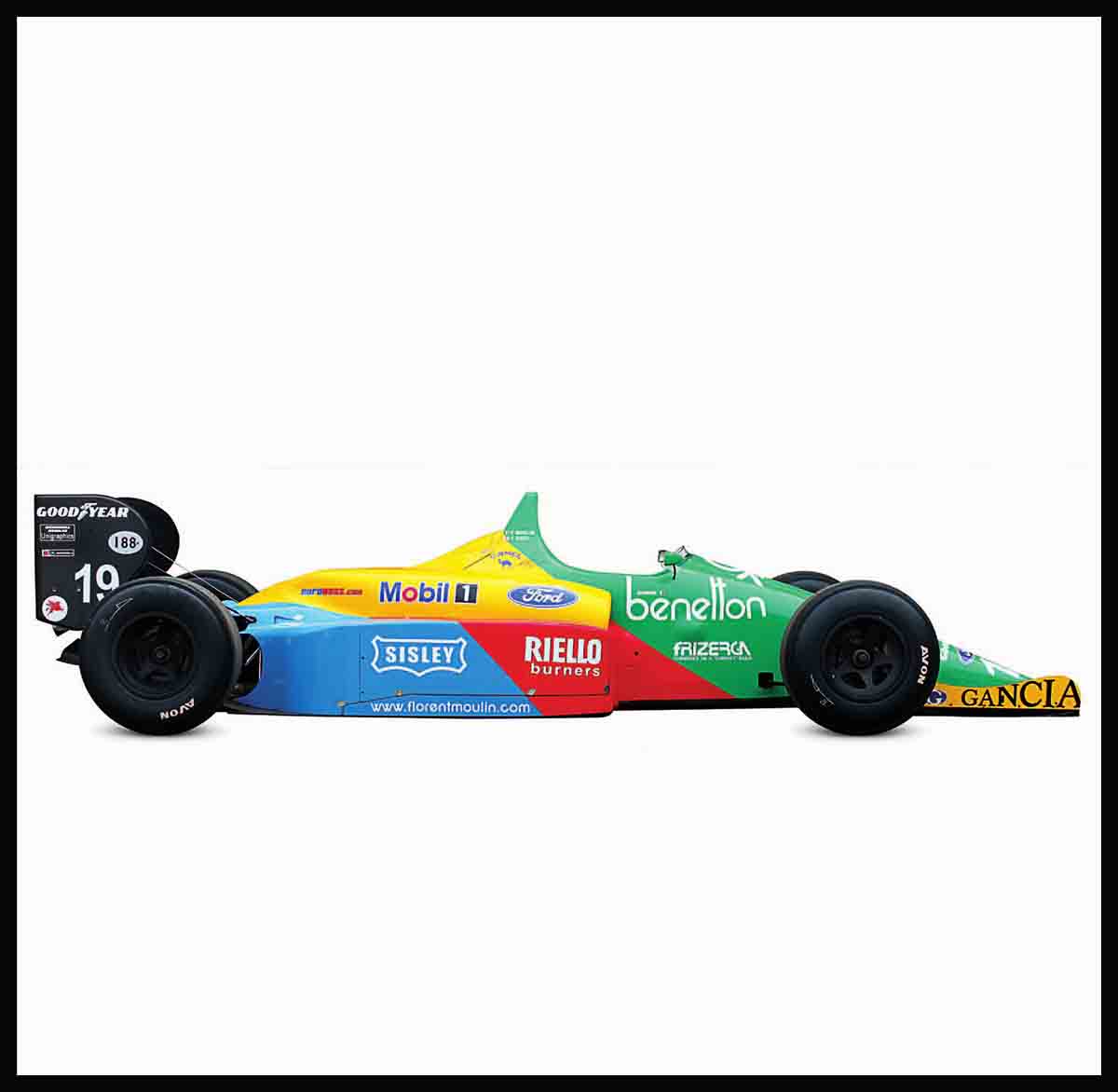
Boosted Performance
The 1980s was the decade of the turbocharger, transforming the top echelons of motor sport both in racing and rallying: Reliability was heavily affected at first by the increased power output, but soon it became impossible to win without one (or more). As technology sent power and speed soaring, legislators struggled to keep up. In the end, turbos became so heavily penalized that normally aspirated engines returned.
Ferrari 126C4/M2, 1984

| Origin | Italy |
| Engine | 1,496 cc, V6 |
| Top speed | 200 mph (322 km/h) |
Despite an 850 bhp power output, the 126C4/M2 struggled against the dominant McLaren MP4/2 in 1984, and finished second in the Formula 1 Constructors’ Championship.
Lancia Beta Monte Carlo, 1979

| Origin | Italy |
| Engine | 1,425 cc, straight-four |
| Top speed | 168 mph (270 km/h) |
Lancia developed this car to contest the Sports Car Racing World Championship. Known as the Scorpion in the United States, it dominated the 2-liter class in 1980-81, beating the Porsche 935s three times.
Lancia Rallye 037 Evo 2, 1984

| Origin | Italy |
| Engine | 2,111 cc, straight-four |
| Top speed | 150 mph (241 km/h) |
Through consistency and great handling on tarmac, the 037 beat Audi’s quattro to win the 1983 World Rally Championship. Abarth built lighter Evo 2s with 350 bhp for 1984.
Porsche 956, 1982

| Origin | Germany |
| Engine | 2,650 cc, flat-six |
| Top speed | 221 mph (356 km/h) |
Built for the World Sportscar Championship, the aluminum monocoque 956 was a winner from the start. Jacky Ickx and Derek Bell led the 1982 Le Mans (France) to the finish.
Porsche 911 SCRS, 1984

| Origin | Germany |
| Engine | 2,994 cc, flat-six |
| Top speed | 160 mph (257 km/h) |
This Group B Porsche lacked four-wheel drive but handled superbly on tarmac, taking Henri Toivonen to second place in the 1984 European Championship.
Porsche 953 4WD, 1984

| Origin | Germany |
| Engine | 3,164 cc, flat-six |
| Top speed | 150 mph (241 km/h) |
Four 953s (effectively four-wheel-drive 911s) were built for the 1984 Paris-Dakar Rally, and two of them finished 1-2. René Metge and Dominic Lemoyne drove the winning car.
Opel Manta 400, 1985

| Origin | Germany |
| Engine | 2,410 cc, straight-four |
| Top speed | 130 mph (209 km/h) |
Without four-wheel drive, the Mantas couldn’t really compete at World Rally Championship (WRC) level, but both Jimmy McRae and Russell Brookes won British Rally Championships in them.
Lotus-Renault 97T, 1985

| Origin | UK |
| Engine | 1,492 cc,V6 |
| Top speed | 200 mph (322 km/h) |
With Ayrton Senna at the wheel, the 900 bhp Lotus 97T could have won the 1985 Formula 1 World Championship had it been reliable: It took eight pole positions in the season.
Peugeot 205 T16 Evo 2, 1985

| Origin | France |
| Engine | 1,775 cc, straight-four |
| Top speed | 155 mph (249 km/h) |
With huge turbo, mid-engine, and 4×4, Timo Salonen took the 1985 WRC Drivers’ title in the big-wing 500 bhp Evo 2 and won the last Group B event in Europe.
Peugeot 405 T16 GR, 1986

| Origin | France |
| Engine | 1,905 cc, straight-four |
| Top speed | 155 mph (249 km/h) |
After Group B rallying was canceled, Peugeot turned to the Paris-Dakar desert endurance rally: Ari Vatanen won in 1989 and 1990 in the mid-engined 405 T16.
McLaren-Honda MP4/4, 1988

| Origin | UK |
| Engine | 1,496 cc, V6 |
| Top speed | 210 mph (338 km/h) |
McLaren secured the best engine for 1988 and Gordon Murray designed the best chassis to host it, Ayrton Senna and Alain Prost winning all but one race of the 1988 Formula 1 season.
MG Metro 6R4, 1984

| Origin | UK |
| Engine | 2,991 cc, V6 |
| Top speed | 155 mph (249 km/h) |
Schemed by Williams’ designer Patrick Head, with a mid-mounted engine later used in the Jaguar XJ220 and four-wheel drive, this was an ultimate Group B rally car.
Benetton-Ford B188, 1988

| Origin | UK |
| Engine | 3,493 cc, V8 |
| Top speed | 200 mph (322 km/h) |
The Italian-sponsored Benetton Formula 1 team turned to Ford Cosworth DFV non-turbo power for 1988. With Alessandro Nannini and Thierry Boutsen driving, they achieved a couple of third places.
It is a quote. The Definitive Visual History Of The Automobile 2011




